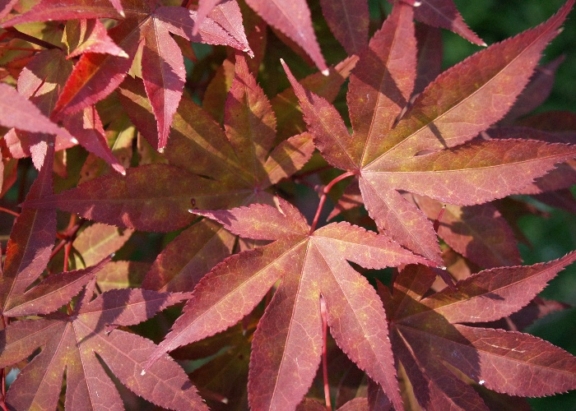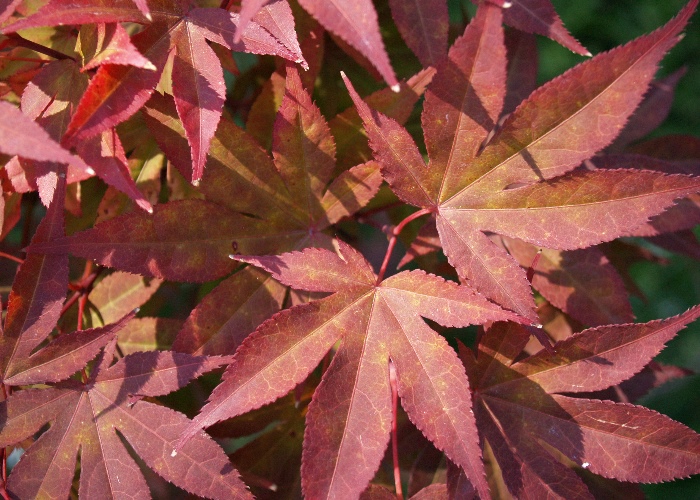
Japanese maple
Family and description
Belonging to the Sapindaceae (Aceraceae) family, the Acer palmatum is a deciduous tree that can reach 8 m in height and 4 to 8 m in diameter. It develops a broad, loose canopy with arching branches and a grey trunk with whitish streaks. Branches can appear at the base.
The leaves are palmate in form, about 5 to 10 cm long, deeply cleft with 5 to 7 lobes and toothed margins and a petiole that is 3 to 5 cm long. In autumn, the foliage varies in colour from yellow to red.
The discreet reddish 5-petal flowers appear in stalked umbrella-shaped clusters between May and June. When leafless, the species captivates the eye with its reddish buds.
The fruit, a pair of winged samaras, reaches maturity in September. It is brownish, dry and has two wings joined at an obtuse angle.
Origin and habitat
A species native to Japan, Korea and China, it was introduced to temperate zones as an ornamental species. It appears in clearings in woods and scrubland.
Sensitive to intense heat, frost and cold winds, it prefers mild conditions with partial sunlight and no wind. It prefers deep, moist soils rich in organic matter and does not tolerate limestone. The species appears up to 3000 metres above sea level, often on plains.
Uses and curiosities
Propagated from cuttings, grafting or seeds.
It was originally introduced to Europe not only for ornamental purposes, but also to form dividing hedges. In Portugal it can be found in gardens, parks and as urban trees. Due to its small size and colourful leaves, the species is popularly used in bonsai.
Today there are various cultivars such as Atropurpureum, Sanguineum, Dissectum and Reticulatum.
